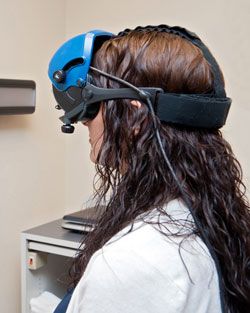Dizziness & Balance
We are proud to offer both diagnostic and therapeutic treatment of dizziness and balance problems. Many patients don’t realize that balance disorders have a variety of origins. For example, disorders of the inner ear, brain or central nervous system, vision, or cardiovascular system can all adversely affect balance.
Our diagnostic services are focused on determining the cause of your balance disorder so we can institute appropriate medical or rehabilitative treatment. In addition to our board certified Doctors of Audiology, we are partnered with several specialized Vestibular Physical Therapists in the community, whose practice is devoted to the rehabilitation of patients suffering from balance disorders.

